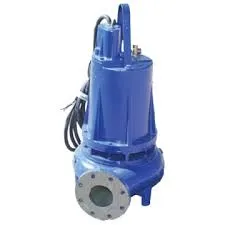English
- Afrikaans
- Albanian
- Amharic
- Arabic
- Armenian
- Azerbaijani
- Basque
- Belarusian
- Bengali
- Bosnian
- Bulgarian
- Catalan
- Cebuano
- Corsican
- Croatian
- Czech
- Danish
- Dutch
- English
- Esperanto
- Estonian
- Finnish
- French
- Frisian
- Galician
- Georgian
- German
- Greek
- Gujarati
- Haitian Creole
- hausa
- hawaiian
- Hebrew
- Hindi
- Miao
- Hungarian
- Icelandic
- igbo
- Indonesian
- irish
- Italian
- Japanese
- Javanese
- Kannada
- kazakh
- Khmer
- Rwandese
- Korean
- Kurdish
- Kyrgyz
- Lao
- Latin
- Latvian
- Lithuanian
- Luxembourgish
- Macedonian
- Malgashi
- Malay
- Malayalam
- Maltese
- Maori
- Marathi
- Mongolian
- Myanmar
- Nepali
- Norwegian
- Norwegian
- Occitan
- Pashto
- Persian
- Polish
- Portuguese
- Punjabi
- Romanian
- Russian
- Samoan
- Scottish Gaelic
- Serbian
- Sesotho
- Shona
- Sindhi
- Sinhala
- Slovak
- Slovenian
- Somali
- Spanish
- Sundanese
- Swahili
- Swedish
- Tagalog
- Tajik
- Tamil
- Tatar
- Telugu
- Thai
- Turkish
- Turkmen
- Ukrainian
- Urdu
- Uighur
- Uzbek
- Vietnamese
- Welsh
- Bantu
- Yiddish
- Yoruba
- Zulu
Telephone: +86 13120555503
Email: frank@cypump.com
Oct . 06, 2024 22:45 Back to list
slurry pump rebuild
Rebuilding Slurry Pumps A Comprehensive Guide
Slurry pumps are crucial components in various industrial applications, particularly in mining, mineral processing, and waste management. These pumps are designed to handle thick, abrasive slurries, making them indispensable in transporting materials like coal, ore, and tailings. However, like any mechanical equipment, slurry pumps experience wear and tear over time, leading to reduced efficiency and potential failure. Rebuilding slurry pumps is an essential maintenance procedure that ensures their longevity and optimal performance. This article explores the importance of rebuilding slurry pumps, the process involved, and key considerations for successful refurbishment.
The Importance of Rebuilding Slurry Pumps
Rebuilding slurry pumps can significantly extend their lifespan and maximize their efficiency. Regular maintenance is vital as wear can affect the hydraulic performance, leading to leaks and increased energy consumption. A well-rebuilt slurry pump will operate more reliably, reducing the likelihood of unexpected downtimes, which can be costly for industries reliant on these pumps for steady operations. Furthermore, maintaining existing pumps is often more cost-effective than purchasing new ones, providing a financial incentive for routine rebuilds.
Another critical reason for rebuilding is the need to minimize environmental impact. Inefficient or failing pumps can lead to slurry leaks, contributing to pollution and posing risks to surrounding ecosystems. By ensuring that pumps are regularly maintained and rebuilt, companies can adhere to environmental regulations and demonstrate a commitment to sustainable practices.
The Rebuilding Process
The rebuilding process of a slurry pump typically involves several key steps
1. Inspection and Assessment The first step in the rebuilding process is a thorough inspection of the pump. This includes checking for wear on critical components such as the impeller, casing, and seals. Assessing the extent of damage will help determine whether the pump can be rebuilt or if parts need to be replaced.
2. Disassembly Once the inspection is complete, the pump is carefully disassembled. Accurate documentation during this phase is crucial for understanding how each component fits together. Taking photographs and notes can be beneficial for reassembly.
slurry pump rebuild

3. Cleaning All components must be cleaned to remove any built-up slurry, debris, or corrosion. This step is important for identifying any hidden wear or damage that may not have been apparent during the initial inspection.
4. Repair or Replacement of Parts After cleaning, damaged components can either be repaired or replaced. Common replacement parts include impellers, wear plates, and seals. In some cases, upgrading to newer materials that offer better wear resistance can be advantageous.
5. Reassembly Following repairs, the pump is reassembled. Care must be taken to ensure that all components are installed according to manufacturer specifications to prevent future issues.
6. Testing Once reassembly is complete, the pump must be tested to ensure it operates correctly. This step may involve running the pump without load to check for vibrations and leaks before it is put back into service.
Key Considerations
When planning a rebuild, several key considerations should be kept in mind
- Manufacturer Guidelines Always refer to the manufacturer’s guidelines for specific instructions regarding disassembly, reassembly, and parts compatibility. - Record Keeping Maintain detailed records of all inspections, repairs, and parts replaced during the rebuild. This documentation can help inform future maintenance decisions. - Training Ensure that personnel involved in the rebuilding process are adequately trained. Knowledge of pump mechanics and maintenance techniques is essential to effectively restore pump function. - Downtime Management Plan rebuilds during scheduled maintenance periods to minimize downtime. Proper scheduling can help maintain operational flow and prevent production loss.
Conclusion
Rebuilding slurry pumps is a vital aspect of industrial maintenance that offers numerous benefits, including cost savings, extended operational life, and reduced environmental impact. Through careful inspection, systematic rebuilding, and adherence to best practices, industries can ensure their slurry pumps continues to function efficiently. Investing in regular maintenance and refurbishment of these critical components is not just a sensible economic decision; it is a key strategy in promoting sustainable and responsible industrial practices.
-
ISG Series Vertical Pipeline Pump - Chi Yuan Pumps | Advanced Engineering&Industrial Efficiency
NewsJul.30,2025
-
ISG Series Pipeline Pump - Chi Yuan Pumps | High Efficiency, Energy Saving
NewsJul.30,2025
-
ISG Series Vertical Pipeline Pump-Chi Yuan Pumps|High Efficiency&Reliable Performance
NewsJul.29,2025
-
ISG Series Vertical Pipeline Pump|High Efficiency&Low Noise
NewsJul.29,2025
-
ISG Series Vertical Pipeline Pump - Chi Yuan Pumps Co., LTD.|High Efficiency, Energy Conservation, Low Noise
NewsJul.29,2025
-
ISG Series Vertical Pipeline Pump-Chi Yuan Pumps Co., LTD.|High Efficiency&Energy-Saving
NewsJul.29,2025










